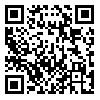Volume 7, Issue 5 (2016)
LRR 2016, 7(5): 171-192 |
Back to browse issues page
1- Assistant Professor of Arabic Language and Literature, University of Qom, Qom, Iran
2- Associate Professor of English, University Baqer, Qom, Iran
2- Associate Professor of English, University Baqer, Qom, Iran
Abstract: (5265 Views)
Subh al-A'sha, written by Ahmad al-Qalqashandi 9 century (H.), elaborating official letter writing styles in Mamluk period is a valuable source for historical politeness studies. Based on Leech's politeness maxims and Beeman's approach to politeness, this paper tries to unravel the politeness strategies in official letters of the Mamluks, which depend heavily on power relations. The results show that strategies adopted in these letters are in line with Beeman's "self-lowering" and "other-raising" elements. They also confirm Leech's maxim 3 and 4, out of his six maxims, whereby individuals do their best to praise the other party during the communication. Thus, strategies applied in these letters include "exclusion," "raising the addressee," and "praising the addressee." Using a religious discourse, whose lack would be offensive, is another feature of Mamluk official letters. Finally, social discourse was also adopted in these letters through which the writer acquired his dependent / independent identity.
| Rights and permissions | |
 |
This work is licensed under a Creative Commons Attribution-NonCommercial 4.0 International License. |

